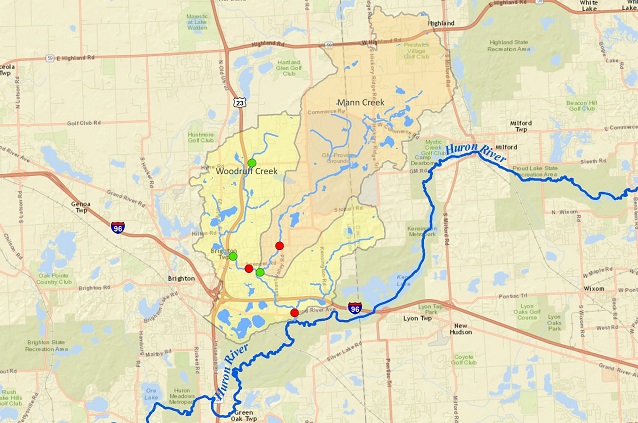Profile

History: In the spring of 1833, Evert Woodruff moved his family to a 160 acre piece of land that included a moderately sized creek, and built a house, a saw-mill, and a grist-mill. The mills were powered by the creek, which became known generally as Woodruff’s Creek. Evert Woodruff bore a reputation far and wide for sound business principles and honesty. His son, Egbert Woodruff, was the first child born in Brighton township. http://www.brightontwp.com/197/An-1880-Text-History-of-EarlySettlers.
Mann Creek is possibly named after the Newman family, who arrived to the region in 1859 and eventually owned hundreds of acres along the creek, including part of what would become the General Motors Proving Grounds.
Woodruff and Mann creeksheds lie in a glacial landscape of coarse sand and gravel deposits, and were once predominantly oak barrens, with tamarack and hardwood swamps growing in low areas. Oak barrens are now considered a critically imperiled ecosystem in the state by the Michigan Natural Features Inventory due to their massive clearing for agriculture during European settlement and continued development. Tamarack and hardwood swamps have also been much reduced throughout in the Huron River watershed.
From the times of these settlers, much of the Woodruff and Mann creeksheds have been developed, and are now home to many sand and gravel operations and a suburban residential land use pattern.
Creekshed Facts: The Woodruff creekshed is 19 square miles, contains 16 lakes (open water > 5 acres) and 19 ponds (open water <5 acres), and the creek runs through 19.1 miles of branching creeks with an average gradient of 9.8 feet per mile. The Mann creekshed is 22 square miles, contains 20 lakes and 21 ponds, and the creek runs through 19.7 miles of branching creeks with an average gradient of 8.1 feet per mile.
Government: The townships of Brighton and Hartland (and little bit of Green Oak) in Livingston County and Milford and Highland in Oakland County, as well as those counties’ Water Resources Commissioners all make decisions that affect the creeks.



